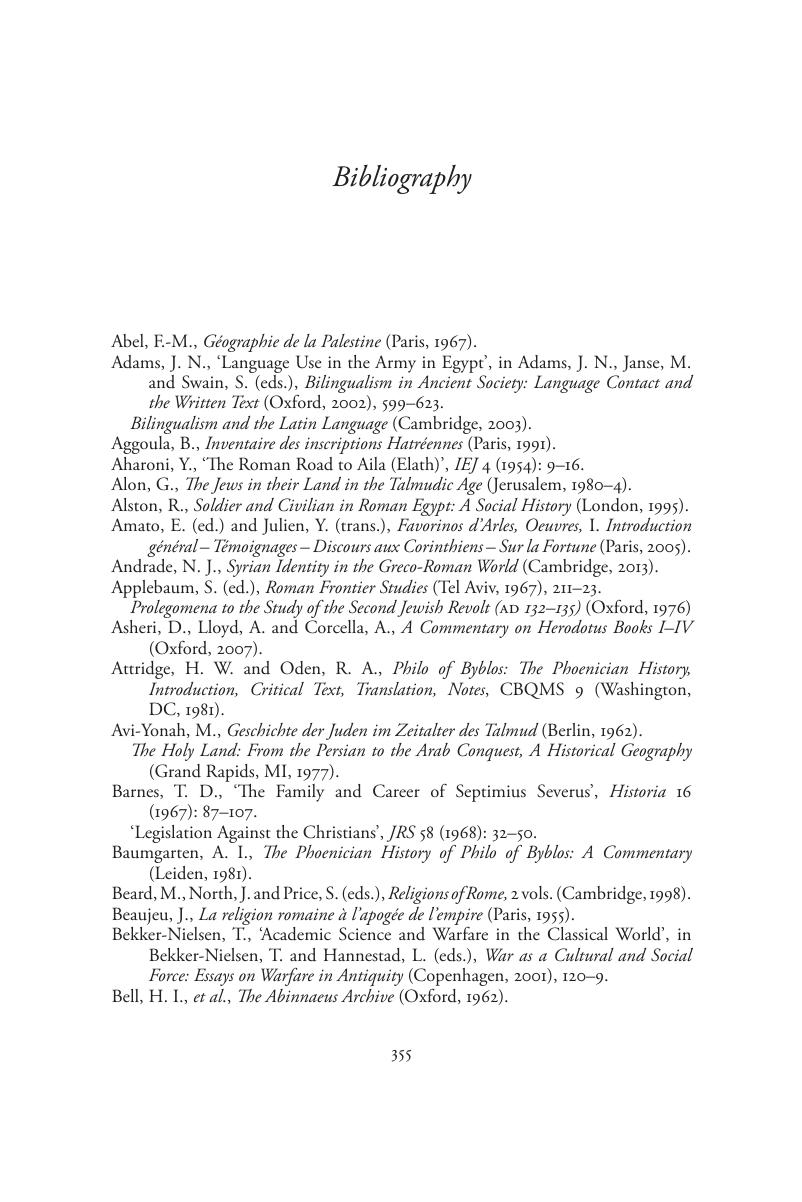Book contents
- Empire and Ideology in the Graeco-Roman World
- Empire and Ideology in the Graeco-Roman World
- Copyright page
- Contents
- Map of Judaea/Palaestina and Arabia
- Places of Original Publication
- Introduction
- Chapter 1 Roma Aeterna
- Chapter 2 Roman Victory Displayed
- Chapter 3 Army and Violence in the Roman World
- Chapter 4 Innovation and the Practice of Warfare in the Ancient World
- Chapter 5 Core–Periphery Notions
- Chapter 6 Names
- Chapter 7 Attitudes towards Provincial Intellectuals in the Roman Empire
- Chapter 8 Proto-Racism in Graeco-Roman Antiquity
- Chapter 9 The Barbarian in Greek and Latin Literature
- Chapter 10 Romans and Nomads in the Fourth Century
- Chapter 11 A Multicultural Mediterranean?
- Chapter 12 Latin in Cities of the Roman Near East
- Chapter 13 Ancient Antisemitism
- Chapter 14 Roman Religious Policy and the Bar Kokhba War
- Chapter 15 Jews, Christians, and Others in Palestine
- Chapter 16 Roman Organization in the Arabah in the Fourth Century ad
- Chapter 17 Hatra Against Rome and PersiaFrom Success to Destruction
- Bibliography
- Index
- References
Bibliography
Published online by Cambridge University Press: 10 August 2017
- Empire and Ideology in the Graeco-Roman World
- Empire and Ideology in the Graeco-Roman World
- Copyright page
- Contents
- Map of Judaea/Palaestina and Arabia
- Places of Original Publication
- Introduction
- Chapter 1 Roma Aeterna
- Chapter 2 Roman Victory Displayed
- Chapter 3 Army and Violence in the Roman World
- Chapter 4 Innovation and the Practice of Warfare in the Ancient World
- Chapter 5 Core–Periphery Notions
- Chapter 6 Names
- Chapter 7 Attitudes towards Provincial Intellectuals in the Roman Empire
- Chapter 8 Proto-Racism in Graeco-Roman Antiquity
- Chapter 9 The Barbarian in Greek and Latin Literature
- Chapter 10 Romans and Nomads in the Fourth Century
- Chapter 11 A Multicultural Mediterranean?
- Chapter 12 Latin in Cities of the Roman Near East
- Chapter 13 Ancient Antisemitism
- Chapter 14 Roman Religious Policy and the Bar Kokhba War
- Chapter 15 Jews, Christians, and Others in Palestine
- Chapter 16 Roman Organization in the Arabah in the Fourth Century ad
- Chapter 17 Hatra Against Rome and PersiaFrom Success to Destruction
- Bibliography
- Index
- References
Summary

- Type
- Chapter
- Information
- Empire and Ideology in the Graeco-Roman WorldSelected Papers, pp. 355 - 364Publisher: Cambridge University PressPrint publication year: 2017



